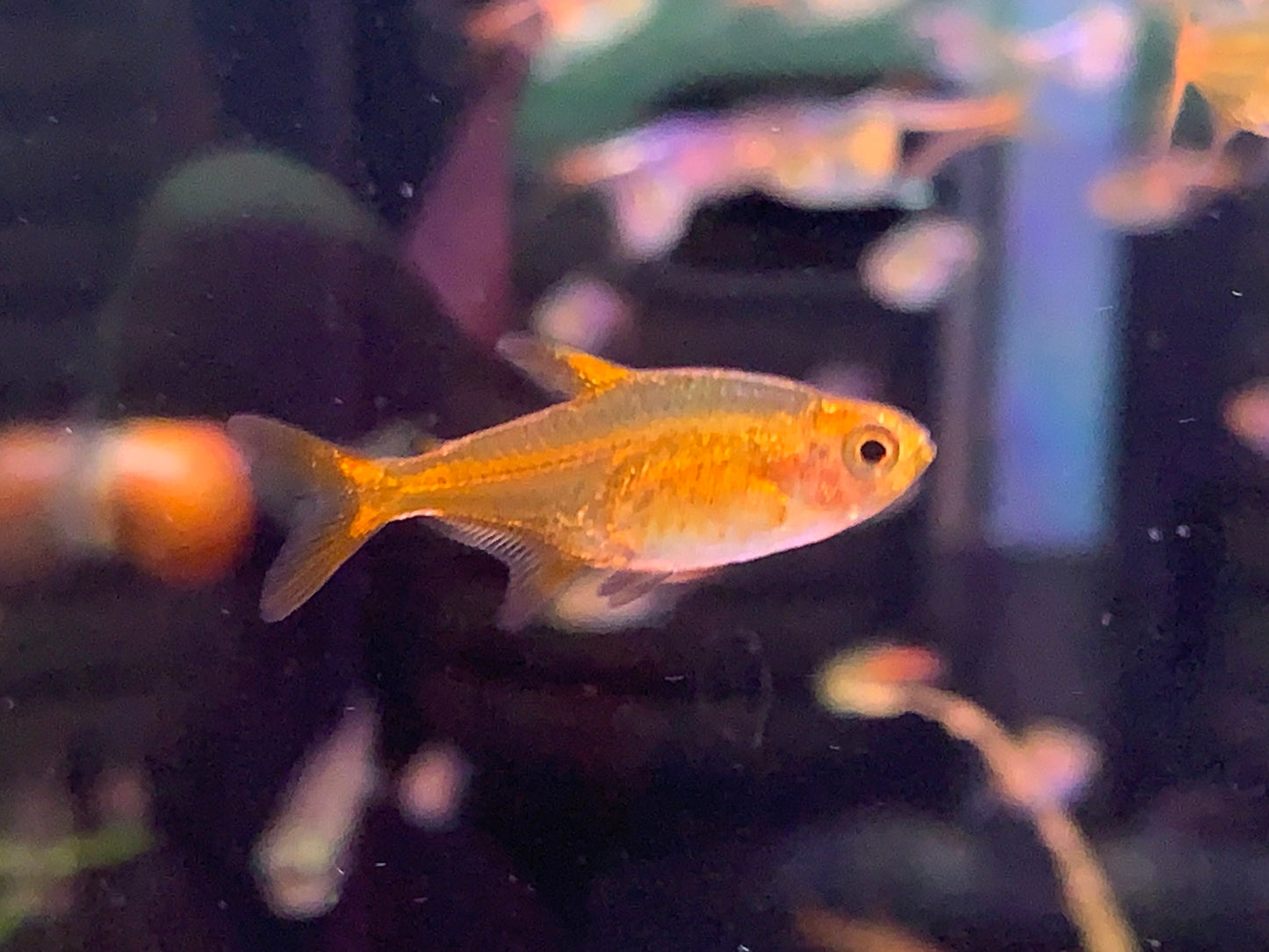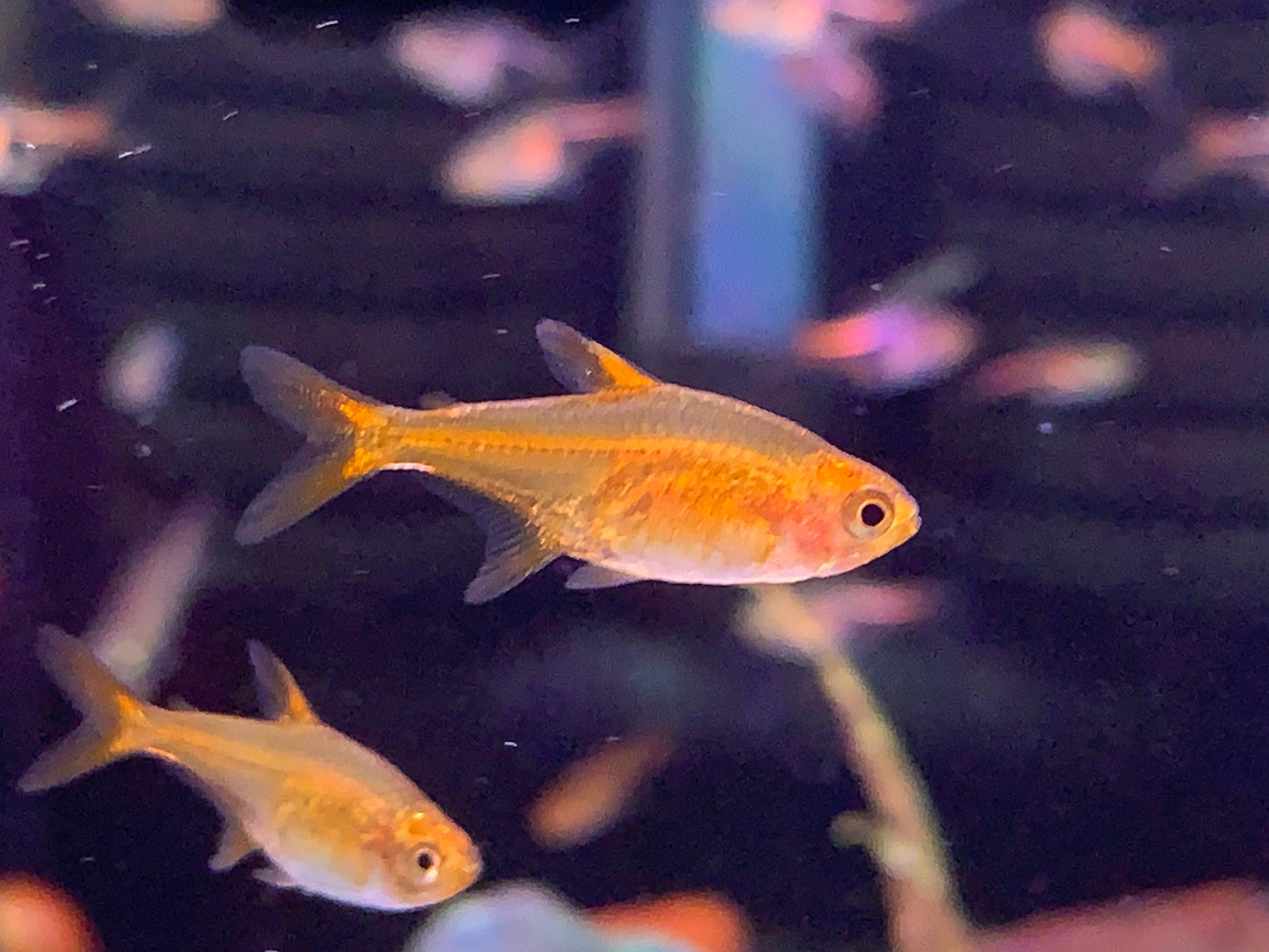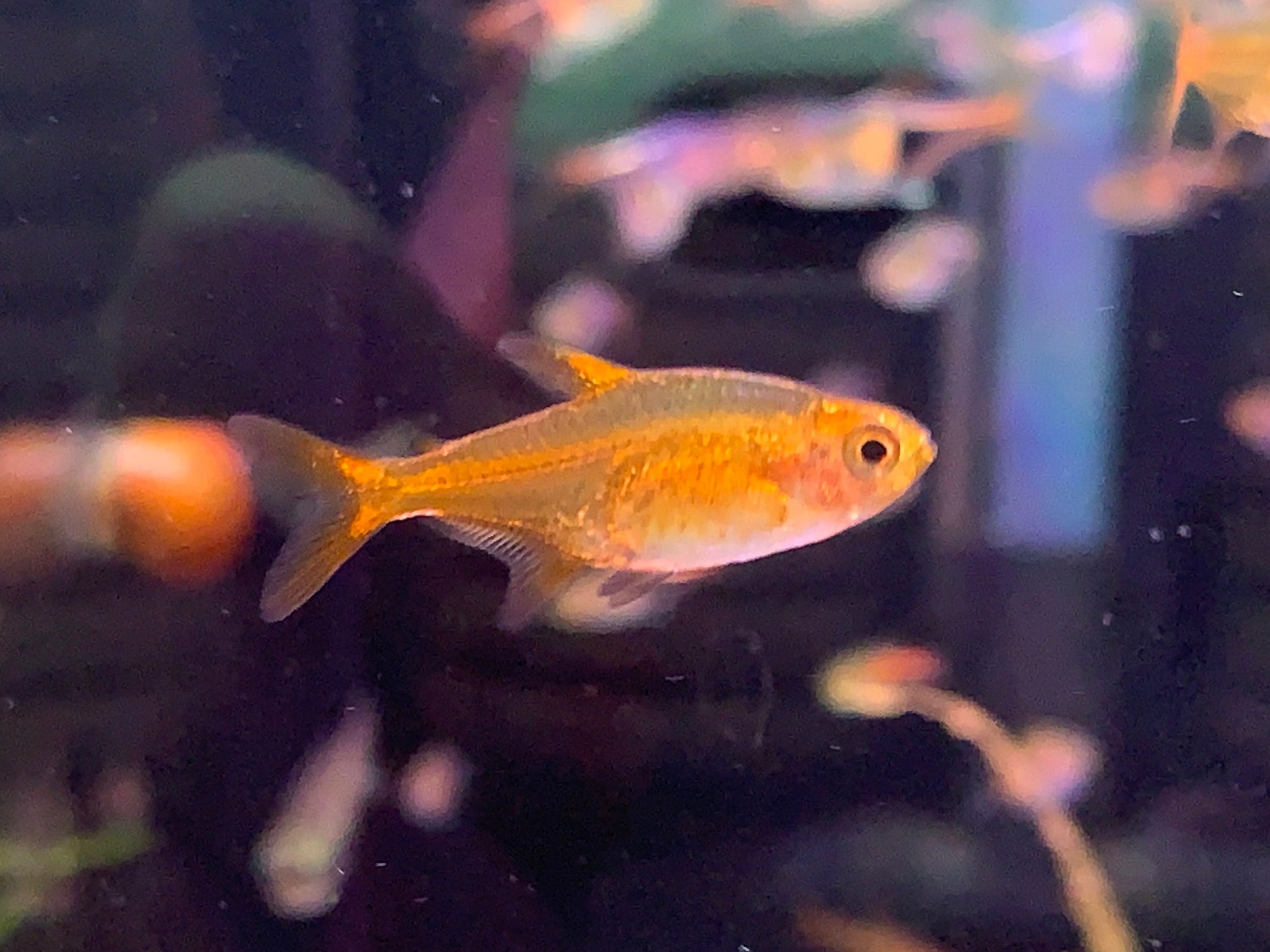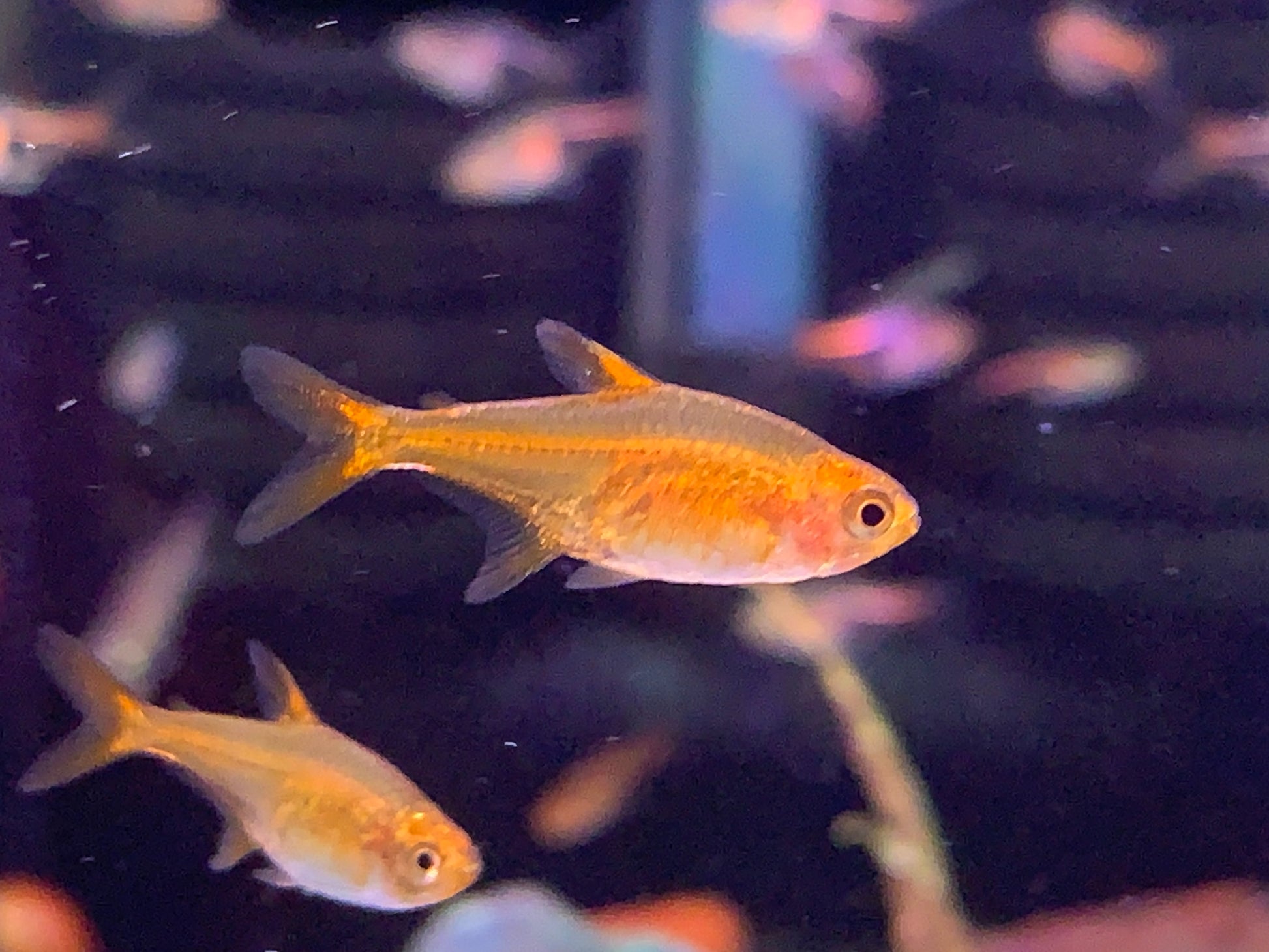1
/
of
2
Aquatic Avenue Online Store
Amber Tetra
Amber Tetra
Regular price
$1.50 SGD
Regular price
Sale price
$1.50 SGD
Unit price
/
per
Couldn't load pickup availability
Amber tetras (Hyphessobrycon amandae) are small, peaceful freshwater fish ideal for community aquariums. Here's a guide to keeping them healthy and happy:
1. Tank Setup
- Tank Size: Minimum 10 gallons for a small group of 6-8; larger tanks are better for bigger groups or community setups.
-
Water Parameters:
- Temperature: 72–82°F (22–28°C)
- pH: 5.5–7.0 (slightly acidic)
- Hardness: 3–12 dGH (soft to moderately hard water)
- Substrate: Dark sand or fine gravel enhances their coloration.
- Decor: Add driftwood, live plants (e.g., Java fern, Anubias, or floating plants), and leaf litter to mimic their natural habitat.
- Lighting: Dim lighting is preferred, as it resembles their native blackwater environments.
2. Water Quality
- Use a good-quality filter with gentle flow.
- Perform weekly water changes (20–30%) to maintain water quality.
- Use a water conditioner to remove chlorine and chloramines.
3. Diet
- Primary Food: High-quality micro-pellets or flakes formulated for small tropical fish.
- Supplements: Offer live or frozen foods such as daphnia, brine shrimp, or bloodworms for variety and optimal health.
- Feeding Frequency: 2–3 small feedings per day.
4. Tankmates
-
Ideal Tankmates: Other peaceful, small species like:
- Neon tetras
- Harlequin rasboras
- Dwarf corydoras
- Shrimp or snails
- Avoid large or aggressive fish that may intimidate or prey on them.
5. Behavior and Group Size
- Amber tetras are schooling fish and thrive in groups of 6 or more. A larger group helps reduce stress and brings out their natural behavior and coloration.
6. Breeding
- Setup: Use a separate breeding tank with fine-leafed plants or a spawning mop for egg-laying.
- Conditions: Slightly softer, acidic water and higher temperatures (~80°F or 27°C).
- Behavior: Males display vibrant colors to attract females.
- Care: Remove adults after spawning to protect eggs, as they might eat them.
Maintaining a stable environment with good water quality and proper feeding will ensure your amber tetras thrive!
Share




